Ever wondered why some riders seem fearless in the saddle while others struggle with nerves? In this guide, you’ll uncover horseback riding tips that bust common myths, boost your confidence, and accelerate your riding skills. Whether you’re a total beginner or ready to level up, these expert strategies, practical examples, and pro insights will help you ride with calm assurance—starting today.
Are You Making These Common Horseback Riding Mistakes?
- Explore why confidence is key in horseback riding and how simple riding tips can change your experience instantly.
Many beginner riders unknowingly repeat mistakes that shake their confidence and stall progress. Misaligned feet, tensed muscles, or gripping too tightly to the saddle horn can make riding a horse feel intimidating. The truth? Horse riding is less about being perfect and more about staying relaxed and aware. Confidence in the saddle grows when you recognize mistakes as learning opportunities, not failures.
Simple changes, such as adjusting posture or softening your communication with your horse, can dramatically improve your comfort and safety. For example, avoiding overusing the saddle horn or learning to mount smoothly with your left foot can instantly build your security and connection with any horse. Keep reading to uncover the key horseback riding tips that transform how you ride and feel when you're with a living animal.
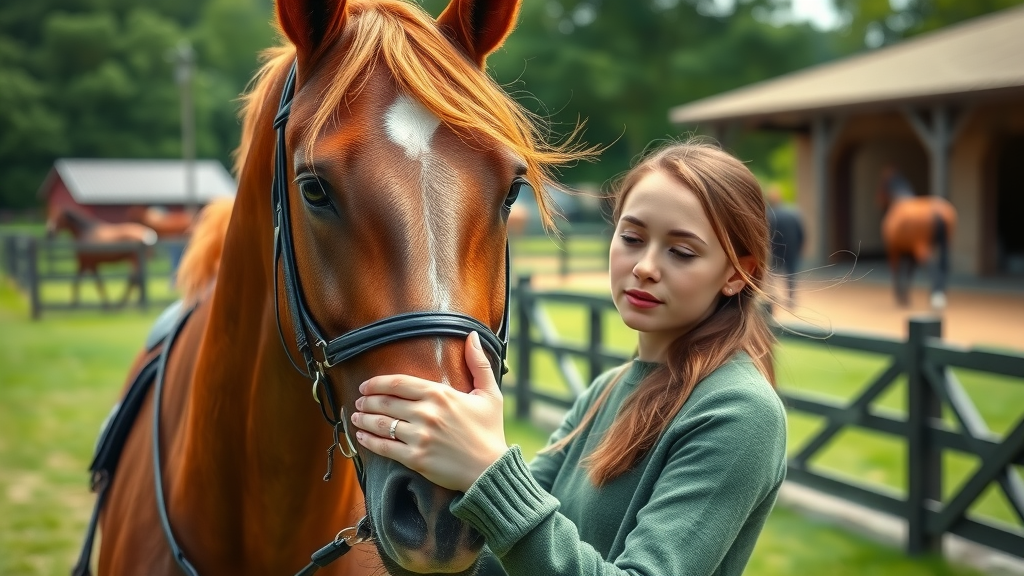
Master the Basics: Essential Horseback Riding Tips Every Beginner Needs
Building a strong foundation with consistent riding tips is essential for every aspiring rider. Core skills—like leading a good horse correctly, mounting confidently, and using effective non-verbal cues—set you up for safe and enjoyable rides. As with any new skill, dedicating time to understand your horse’s movements and responses during each horse ride helps you move forward with ease.
For beginner riders, these tips for beginner equestrians provide the safest and fastest path to confidence. Practice haltering, grooming, and walking your horse calmly while giving cues with both your left hand and right hand. Every interaction with your horse is an opportunity to build trust, so stay attentive to its body language, such as ear movement or shifting posture, which signals comfort levels or uncertainty. Consistency in these fundamentals develops lasting communication that will support you in every future riding trip.
Understanding Your Horse: Building Trust for Confident Riding
- Learn foundational skills, including horse handling, mounting, and communicating via non-verbal cues using proven horseback riding tips. See how these essentials are vital for back riding and good horse management.
Confidence as a horse rider starts with connection. Spend time on the ground, speaking softly and stroking your horse’s neck or shoulder to make the animal feel at ease. Horses are highly perceptive living animals—they pick up on every gesture and tone. Use positive, calm body language to show you’re a trustworthy partner.
Non-verbal cues are essential riding tips, especially for beginner riders learning to build rapport. Stand to the side of your horse when mounting to avoid sudden movements, and always check that your saddle is secure before getting on. Develop the habit of watching your horse’s eyes and ears—these cues reveal if it is relaxed and ready or needs more time to understand what you are asking. Mastering these basics creates a solid foundation for safe and confident back riding.
The Reverse Pyramid Approach: Prioritizing Safety and Mindset in Horseback Riding
Safety comes first in horseback riding, and so does your mindset. The “reverse pyramid” approach means prioritizing mental readiness and protective measures before diving into advanced techniques. This strategy is crucial during your first trail ride or riding trip, as nerves and excitement can easily get in the way of good judgment.
Before you even mount up, check your helmet fit, saddle, girth, and gear for any signs of wear. A quality horse riding helmet is a non-negotiable safety tool that protects even the most experienced rider from potential falls. Equally important is calming your mind—practicing deep breathing or visualization helps steady anxiety and helps you stay calm in any situation. Tackling nerves early helps you learn, react, and enjoy your ride with true confidence.
Overcoming Fear: Mental Strategies for Nervous Horse Riders
It’s natural to feel nervous before a horseback ride. The key is not ignoring fear, but learning to manage it with positive mental strategies. Remember, every horse rider—even Olympians—has faced anxiety at some point. Visualization, affirmations, and focusing on small wins give you immediate confidence and redirect attention to progress.
Try breathing exercises before mounting or during a pause on the trail ride. Imagine yourself confidently handling the road ahead, staying balanced, and responding calmly to a spook or unexpected movement. Setting micro-goals—like sitting a walk with a relaxed posture or guiding a good horse smoothly through a turn—can quickly transform fear into ability, helping you move forward each ride.
Proper Gear and Attire: Riding Tips for Safe and Comfortable Horse Riding Experience
- Detailed advice on helmet fitting, use of the saddle horn, boots, and clothing for trail rides and riding trips.
Wearing the right gear is a cornerstone of safety and comfort in horseback riding. Always select a well-fitted helmet—try several to find one that sits snug but not tight. Long pants protect your legs from saddle rub; boots with a small heel prevent your feet from sliding through the stirrups. For comfort, wear horseback riding-specific shirts that allow your arms and torso freedom of movement.
When you begin a trail ride or riding trip, organize your gear in advance. Check your boots for grip and comfort, inspect reins and straps for frays, and make sure to have access to a saddle horn if riding Western-style. Keep layers appropriate for weather changes and opt for sturdy gloves on longer outings to maintain good control. These simple riding tips prepare you to handle anything on your next back riding adventure.
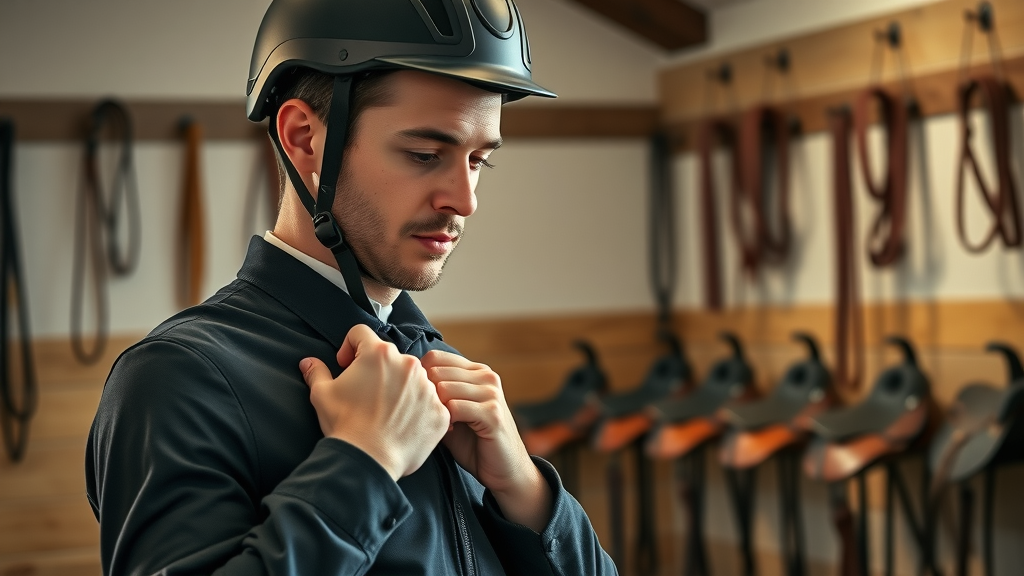
Position and Balance: The Building Blocks of Confident Horse Riding
Your posture and balance set the tone for every horse ride. Sitting upright with shoulders relaxed, heels down, and eyes on the trail prepares you to respond quickly and safely—no matter what your horse decides to do. Good riding skills begin with a secure seat, especially for beginner riders seeking to avoid the classic mistakes of slouching, tensing, or shifting weight unevenly.
A balanced position allows you to follow the motion of the horse, helping you to stay calm and develop instincts for back riding. This, combined with steady hands and a relaxed core, means fewer unexpected movements and more mutually enjoyable experiences on every riding trip. As you gain confidence, try riding without stirrups at the walk to improve balance. Keep the road ahead in focus but trust your body’s alignment to respond naturally in every scenario.
Posture Perfection: Simple Horseback Riding Tips for a Secure Seat
Posture is more than appearance—it’s the foundation of safety. For a correct seat, imagine a straight line running from your ear down to your shoulder, hip, and heel. This allows the horse to move freely beneath you and gives you the flexibility to absorb unexpected changes in stride or direction. With your shoulders gently back and your hands steady but soft on the reins, you help your horse understand what’s expected and feel more at ease.
Use your core muscles to keep balanced as your horse walks, turns, and stops. Practice letting your hips move with the horse’s stride rather than against it. Over time, mindful attention to posture builds muscle memory and gives you that proud, upright look of a confident horse rider—whether you’re in an arena or out on a trail ride.
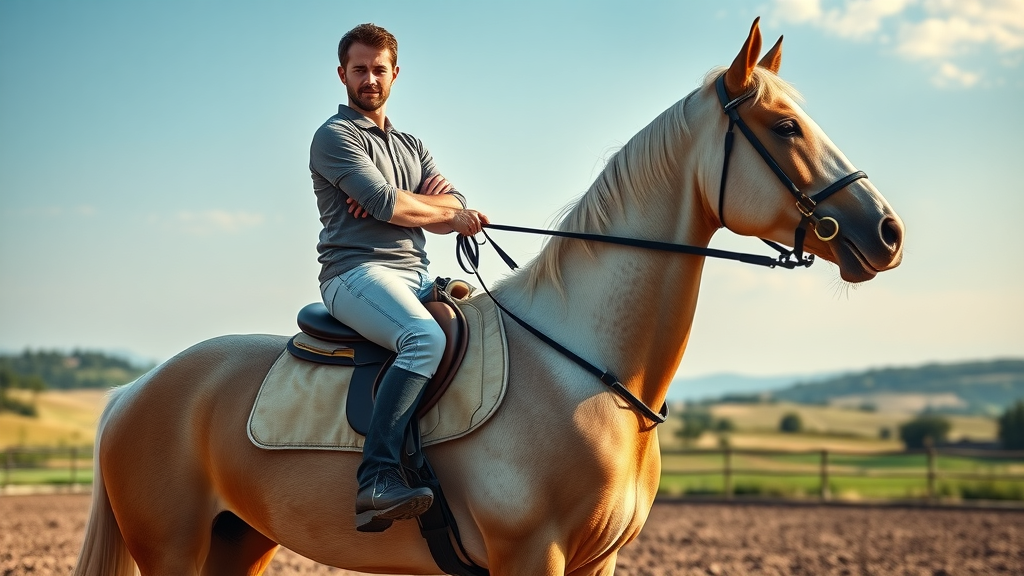
How to Hold the Reins and Use the Saddle Horn Effectively
Mastering rein control is one of the most important riding tips for beginners. Hold the reins with a gentle, relaxed grip—think of holding a small bird: firm enough not to let go, but gentle enough not to injure it. Place your left hand (if riding Western) on the reins, with a slight bend in your elbow and keep your back of your hand facing up. Your right hand should be ready to extend your arm for balance but not to pull or jerk suddenly.
The saddle horn serves as a valuable safety aid, especially during mounting or on challenging trail rides. Use it briefly for extra stability but avoid making it a permanent crutch—over-reliance can stunt your riding skills. Remember, true balance and control come from posture and leg position, not from clutching the saddle horn. As you progress, challenge yourself to ride using the horn only when absolutely necessary.
Effective Communication: Using Aids for Clear Back Riding
Communication with your horse relies on consistent, subtle aids. The best horse riders use their whole bodies—legs, hands, voice, and weight cues—to guide their mount respectfully and efficiently. This form of “speaking horse” keeps the animal calm and responsive and is a core skill in both arena lessons and trail rides.
Become familiar with applying gentle pressure with your legs to ask for direction or speed changes and using reins only as a supportive steering tool. Balance your hand aids and seat aids to avoid confusing your horse. Mastering these elements will make your riding tips far more effective, helping you develop into a capable and confident back riding partner.
Leg and Rein Aids: Mastering Control for Beginner Riders
Your legs provide vital signals in horse riding. Squeezing gently with both calves signals your horse to move forward , while one leg placed slightly behind the girth asks for turns. Combined with steady, clear rein instructions from your left and right hand, you’ll be able to guide your horse through any maneuver.
Practice transitions—walk to halt, halt to walk, and gentle turns—by coordinating your hand and leg cues. Avoid pulling harshly on the reins, and instead, aim for soft, elastic contact. As you grow, these back riding basics become second nature, forming the base for advanced moves and giving you control on every horse ride, from arena lessons to trail riding adventures.
Voice and Body Language: Tips for Control and Trust
Horses don’t speak our language, but they respond instantly to the sound and feel of our voice and body movement. Use a low, soothing tone for reassurance and a gentle cluck or click to encourage more energy. Visualize the behavior you want—like a turn or halt—and let your energy guide your actions.
In horse riding, your body language signals confidence, calm, and safety. Relax your shoulders, keep your core strong, and avoid tensing up—even if you feel nervous. With consistent practice, your horse will learn to trust you, making future riding skills like advanced turns or obstacle work much easier.
| Rider Aid | Effect on Horse | Example |
|---|---|---|
| Leg Pressure | Encourages forward movement or bending | Apply calf for a walk or turn |
| Rein Contact | Steers, slows, or halts the horse | Gentle pull to stop; open rein for turning |
| Voice | Calms or energizes the horse | Soft “whoa” to halt; cluck to move forward |
| Weight Shift | Signals turns or speed changes | Lean slightly forward to ask for more energy |
Preparation and Planning: Riding Tips for a Successful Trail Ride
Successful trail rides start long before you step into the saddle. Proper preparation ensures safety, comfort, and unforgettable adventure. Develop a pre-ride checklist with all essential horse riding gear—helmet, boots, gloves, long pants, water, and emergency contacts. Evaluate your route to ensure it’s appropriate for your current riding skills and discuss any concerns with your instructor or guide.
Plan your riding trip according to time, weather, and your horse’s temperament. A good horse for a beginner is responsive but calm—not overly energetic or spooky. Make sure your tack is suitable for your skill level (lightweight saddles, simple bridles), and always double-check equipment for wear before heading out. These steps offer you—and your horse—a safer, more enjoyable ride.
Pre-Ride Checklist: Safety and Equipment
Before every horse ride, work through a thorough safety and equipment checklist. Confirm your helmet is correctly fitted. Inspect girths and billet straps for signs of stretching or damage. Ensure the saddle is secure and all tack is comfortable for your horse. Review the weather and pack essentials—a first aid kit, water bottle, a map or navigation app, and snacks—for longer trail rides.
For added safety, inform a friend or stable staff of your planned route and expected return time. On your ride, keep your eyes on the trail and remain alert to possible hazards, such as low branches, uneven ground, or wildlife. These riding tips may seem simple, but they’re critical for confident and safe riding, especially when venturing into unfamiliar areas.
Choosing the Right Horse and Tack for Your Skill Level
- Step-by-step guidelines for matching good horse temperament with beginner riders, plus best practices for trail ride preparation.
Ever notice how some horses seem to read your mind? Selecting a good horse —gentle, steady, and not easily startled—is key for first-time trail riders or anyone still building confidence. Ask an instructor or stable hand for help assessing horse temperament and energy. Avoid riding high-spirited or green horses until you’re an experienced rider.
Match your tack to your needs: beginners often benefit from saddles with deeper seats and clear, easy-to-manage reins. Adjust stirrups to suit your leg length and make sure your horse is comfortable with all equipment. These precautions set you—and your horse—up for a smooth, controlled outing. With the right partnership and secure gear, every ride becomes a new milestone.

The 20 Rule and Other Vital Riding Tips for Progress
"Progress comes from persistence—follow small, consistent steps for greater achievements in horse riding."
Improvement in horseback riding, like any skill, takes repetition and patience. The “20 rule” is a favorite tip among professional trainers: dedicate at least 20 minutes to each new skill, whether mounting, trotting, or practicing rein aids. This measured approach helps both rider and horse internalize movements, build muscle memory, and reduce mistakes under pressure.
Alongside the 20 rule, establish clear, attainable goals. Focusing on consistency with small steps leads to lasting confidence gains and ensures that back riding becomes second nature, not a source of stress. Begin with simple, repeatable tasks, then celebrate every achievement—no matter how small.
How the 20 Rule Helps Beginner Riders Build Confidence
Dedicating 20 focused minutes to one skill at a time eliminates overwhelm and allows for real progress. Say you want to perfect your mounting technique: set a timer for 20 minutes and practice only mounting and dismounting, correcting each step as you go. Both your body and your horse will learn what’s expected, reducing anxiety for your next horse ride.
This principle applies to every aspect, from leading your horse to refining your seat. Over time, short, regular sessions yield stronger skills and a trusting bond with your horse. Consistency beats intensity—a small, daily effort transforms nervous beginner riders into calm, responsive horsemen and women.
Establishing SMART Goals for Your Next Horseback Riding Adventure
Goal setting keeps your riding journey on track. Use the SMART framework—set goals that are Specific, Measurable, Achievable, Relevant, and Timely. Examples include: “By the end of this month, I will ride at a posting trot confidently for five minutes,” or “I’ll master mounting without help in two weeks.”
Keep a riding journal or blog post to track your improvements. Discuss your objectives with instructors to ensure they’re right for your skill level and adjust regularly as you progress. Clear targets give you purpose and direction, making every riding trip a stepping stone to new achievements.
Visual Guidance: Posture, Mounting, and Control
Sometimes, seeing is believing. Watching professionals demonstrate proper mounting, balanced posture, and subtle rein handling accelerates your own skill development. Look for online tutorials or ask your instructor for demo videos. Notice how experienced riders prepare for a horse ride, how they adjust the saddle, and how they use body language to guide their horse.
Replicate these actions in front of a mirror or record your ride for self-assessment. Comparing your form to experienced horse riders helps spot and correct even minor mistakes. Visual learning is a powerful boost on the road ahead, especially when you feel nervous or unsure about next steps.
What Not to Do: Common Mistakes in Horseback Riding and How to Avoid Them
- A list of frequent errors (overusing the saddle horn, improper mounting, tensing the body) with actionable fixes for safe back riding.
Every horse rider, even the most seasoned, occasionally makes mistakes. The most common for beginner riders include overusing the saddle horn (which hinders balance), improper mounting (missing the stirrup or swinging too quickly with the left foot), and tensing up during nervous moments. These can upset your horse and lead to loss of confidence or even falls.
Actionable fixes: Only use the saddle horn briefly when needed, practice slow controlled mounts using the left hand for balance, and try progressive relaxation exercises to keep your body loose. Always review your ride with a friend or instructor—honest feedback is an irreplaceable riding tip for growth.
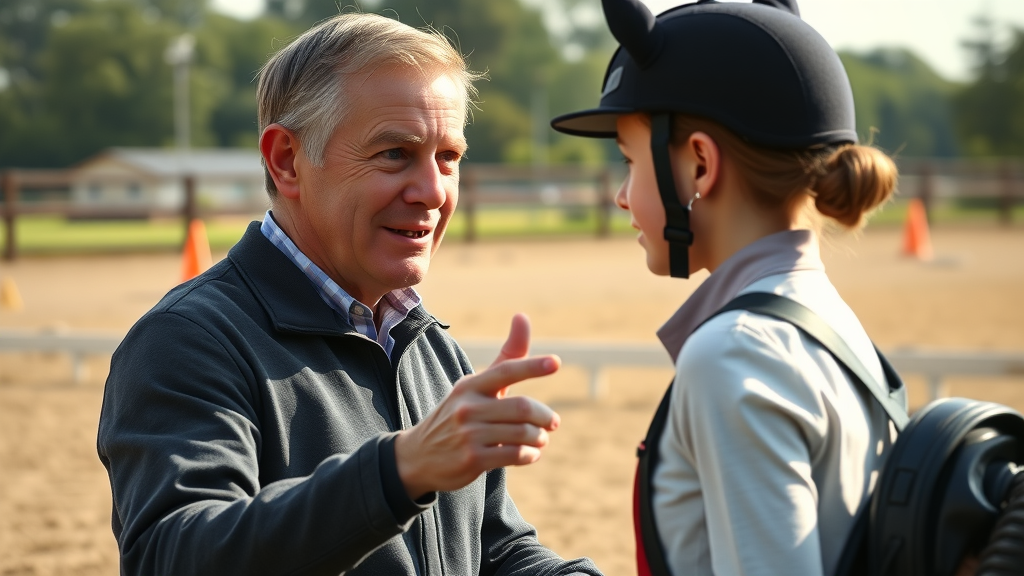
Advanced Horse Riding Tips: Level Up Your Skills
Ready to step beyond the basics? Advanced horse riding tips involve refining subtle cues, adapting to unpredictable scenarios, and mastering trail ride techniques for any terrain. Advanced riders use seat, leg, and rein aids nearly invisibly, focusing on harmony and partnership with the horse.
Practice transitions between gaits, learn lateral movements, and master riding in different environments—from arenas to wooded trails. These advanced strategies not only elevate your control and enjoyment but also prepare you for specialized activities like jumping, dressage, or long-distance trail rides.
Transitioning from Beginner to Confident Horse Rider
The shift from beginner to experienced horse rider is gradual and built upon repetition and feedback. Take incremental steps: ride different horses when possible, attend clinics, or join group rides for exposure to new challenges. As confidence grows, start riding more assertively—trying small jumps, negotiating tight turns, or handling spirited horses under supervision.
Advanced riding means problem-solving: learning to read your horse’s concerns, correcting your seat when things go awry, and maintaining control on steep hills or rocky ground. Embrace every outing, good or bad, as a building block towards mastery. The most successful horse riders are those who never stop learning.
Trail Ride Techniques and Navigating Challenging Terrain
Trail riding introduces both opportunity and risk. Stay alert to the changing road ahead, soften your movement on uneven ground, and guide your horse steadily with clear cues. When crossing streams or traversing inclines, lean slightly forward, loosen the reins, and be patient—never rush or force your horse through unfamiliar obstacles.
Riding in groups? Keep enough distance between horses and communicate with fellow riders. Practice stopping, turning, and moving forward as part of a group—a critical riding tip for ranch vacation and organized riding trips. The more exposure you get to different terrains, the more confident and adaptable you’ll become.
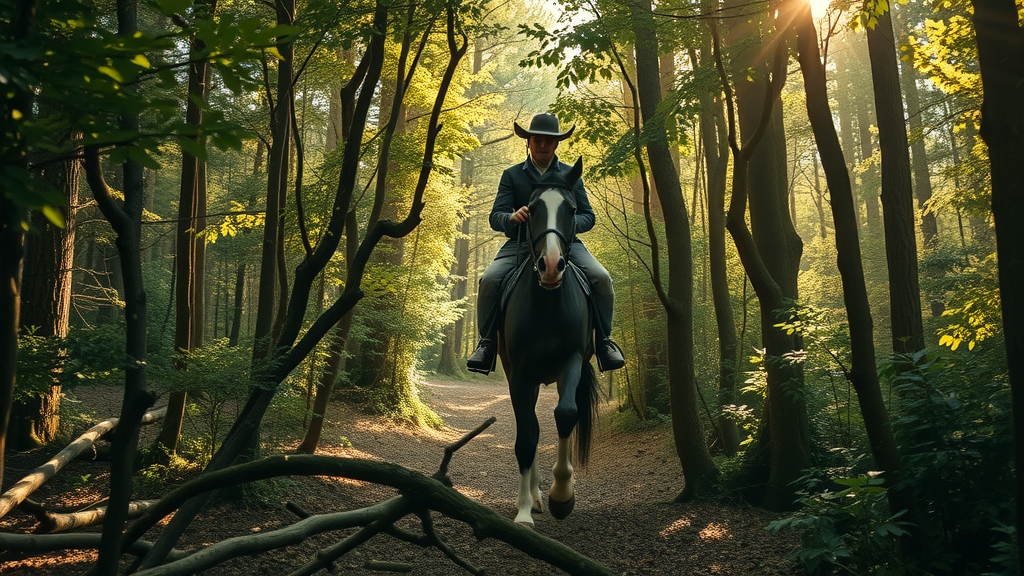
Expert Tips on Bonding and Understanding Your Horse’s Cues
Deepening your bond with your horse unlocks new levels of performance and safety. Videos focused on groundwork, horse handling, and reading subtle cues (like tail swishing or head position) provide valuable insight for building trust. Use these lessons to refine your non-verbal communication and spot early signals of horse anxiety or discomfort.
The more you learn to interpret and respect your horse’s needs, the more reliable your partnership will become—on a trail ride, in an arena, or during unexpected events. Trust is the glue that turns everyday rides into extraordinary journeys.
Your Step-by-Step Guide to a Fearless Horse Riding Journey
- Start with foundational skills: handling, grooming, and leading your horse.
- Always check and fit your gear before each ride.
- Warm up mentally with calming exercises and visualization.
- Mount carefully, focusing on balance and smooth movements.
- Sit tall with relaxed shoulders—maintain posture perfection every ride.
- Use gentle leg, rein, and voice aids to guide your horse clearly.
- Stick to the 20 rule for all new skills—practice, rest, repeat.
- Plan each trail ride in advance, matching horse and tack to your level.
- Seek feedback from instructors, and adjust goals as you grow.
- End every ride with gratitude—for your horse, your safety, and your progress.
Quotes from Professional Equestrians on Horseback Riding Confidence
"Confidence in the saddle doesn’t come overnight—practice, patience, and positivity are your best companions." - Renowned Instructor
"Every great horse rider started as a beginner, just like you." - Expert Rider
Frequently Asked Questions About Horseback Riding Tips
What is the trick to riding a horse?
- Success in horse riding involves staying relaxed, using clear riding tips, and being attentive to your horse’s responses for smooth communication.
The trick is mastering balance, consistency, and mindfulness. Build trust with your horse through calm energy, clear aids, and a willingness to learn from each session. Stay present, adapt quickly, and always listen to your horse’s feedback for the safest and most rewarding horse riding experiences.
What is the 20 rule for horseback riding?
- The 20 rule means practicing new skills for 20 minutes to allow both rider and horse time to learn incrementally—an essential horseback riding tip for improvement.
Spend at least 20 focused minutes building or refining a single skill. This technique helps establish muscle memory for both horse and rider, ensuring progress is steady and setback-free. Break longer sessions into short, concentrated blocks to keep yourself—and your horse—motivated and relaxed.
How do I get better at horse riding?
- Consistent practice, following beginner riding tips, working with a good horse, and staying patient accelerate your progress in horse riding.
Improvements come from structured lessons, regular practice, and learning from both successes and mistakes. Follow trusted riding tips, seek feedback, try different horses and disciplines, and nurture a positive attitude, especially on tough days. Over time, dedication pays off with dramatic increases in skill and confidence.
What not to do when horseback riding?
- Do not tense up, pull harshly on the reins, or neglect safety checks—these habits can hinder your riding experience and confidence.
Avoid rushing any part of your ride, neglecting your horse’s signs of distress, or letting nerves control your actions. Check all gear before every session, maintain open body language, and ride with awareness of the horse’s welfare and your own safety. These are cardinal back riding tips every rider should follow.
Quick-Action Tips Visualized By Professionals
Short video guides can quickly show areas to improve—like proper mounting, holding the reins, communicating with leg aids, or navigating a trail ride. Study these bite-sized lessons from professional horse riders and practice their techniques until they feel natural. Incorporate quick action tips into your warm-up routine for instant growth every time you step into the arena.
People Also Ask
What is the trick to riding a horse?
- Focusing on staying balanced, using the correct aids, trusting your horse, and practicing patience helps riders master horse riding.
Mastery in horseback riding is more about attitude and awareness than brute skill. Every tip for beginner riders emphasizes trust—trusting your horse, your instincts, and the learning process. Take your time, remain consistent, and celebrate small wins for lasting progress.
What is the 20 rule for horseback riding?
- The 20 rule means dedicating at least 20 quality minutes to each skill or task, emphasizing patience and gradual progress in horse riding.
By steadily investing time and attention in one riding skill at a time, both horse and rider build confidence and understanding. The 20 rule is a vital strategy to prevent frustration and allow gradual, sustainable improvement, especially for those new to riding.
How do I get better at horse riding?
- Follow foundational riding tips, seek guidance from instructors, ride consistently, and aim for gradual improvement in all horseback riding skills.
Growth is tied to commitment and a willingness to learn. Set realistic short-term goals, track your improvement, and don’t hesitate to ask for feedback. Broadening your experiences—different horses, terrains, and disciplines—further sharpens your instincts and adaptability.
What not to do when horseback riding?
- Avoid sudden movements, lose focus, ignore your horse’s feedback, or take unnecessary risks. These are key back riding mistakes to watch for.
Safety should always be your priority. Stay balanced, keep your mind engaged, and respect your horse’s signals. Neglecting these basics can endanger both you and your horse—adopt each suggested riding tip for confident, enjoyable riding.
Summary: Actionable Horseback Riding Tips for Lifelong Confidence
- Recap the most potent horseback riding tips and encourage readers to apply at least one suggestion on their next ride for immediate confidence gains.
Confidence is built with every ride. Apply one new horseback riding tip today—whether it’s refining your posture, practicing the 20 rule, or communicating more clearly—and transform not just your skills, but your entire riding journey, starting now.
 Add Row
Add Row  Add
Add 

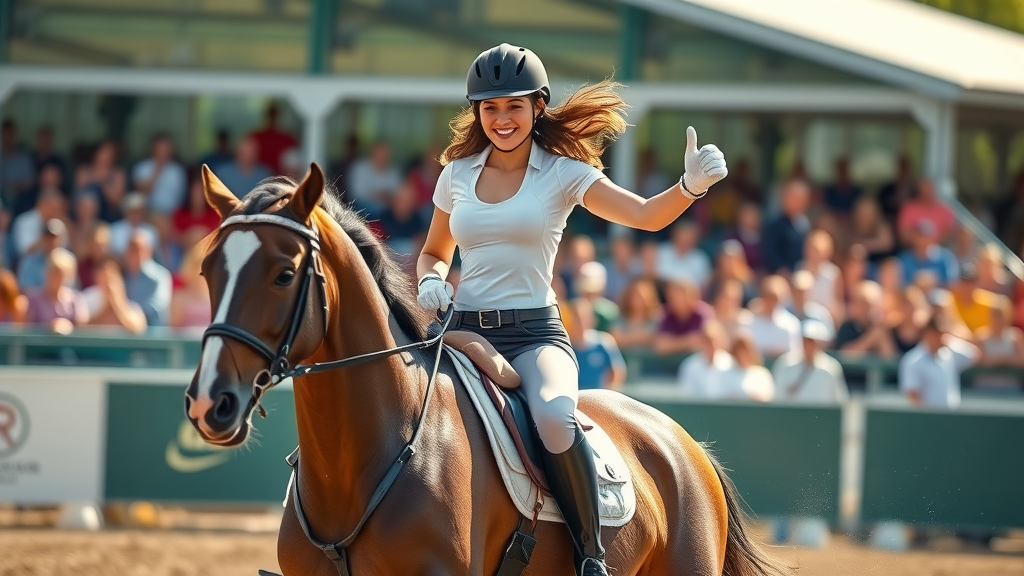


Write A Comment